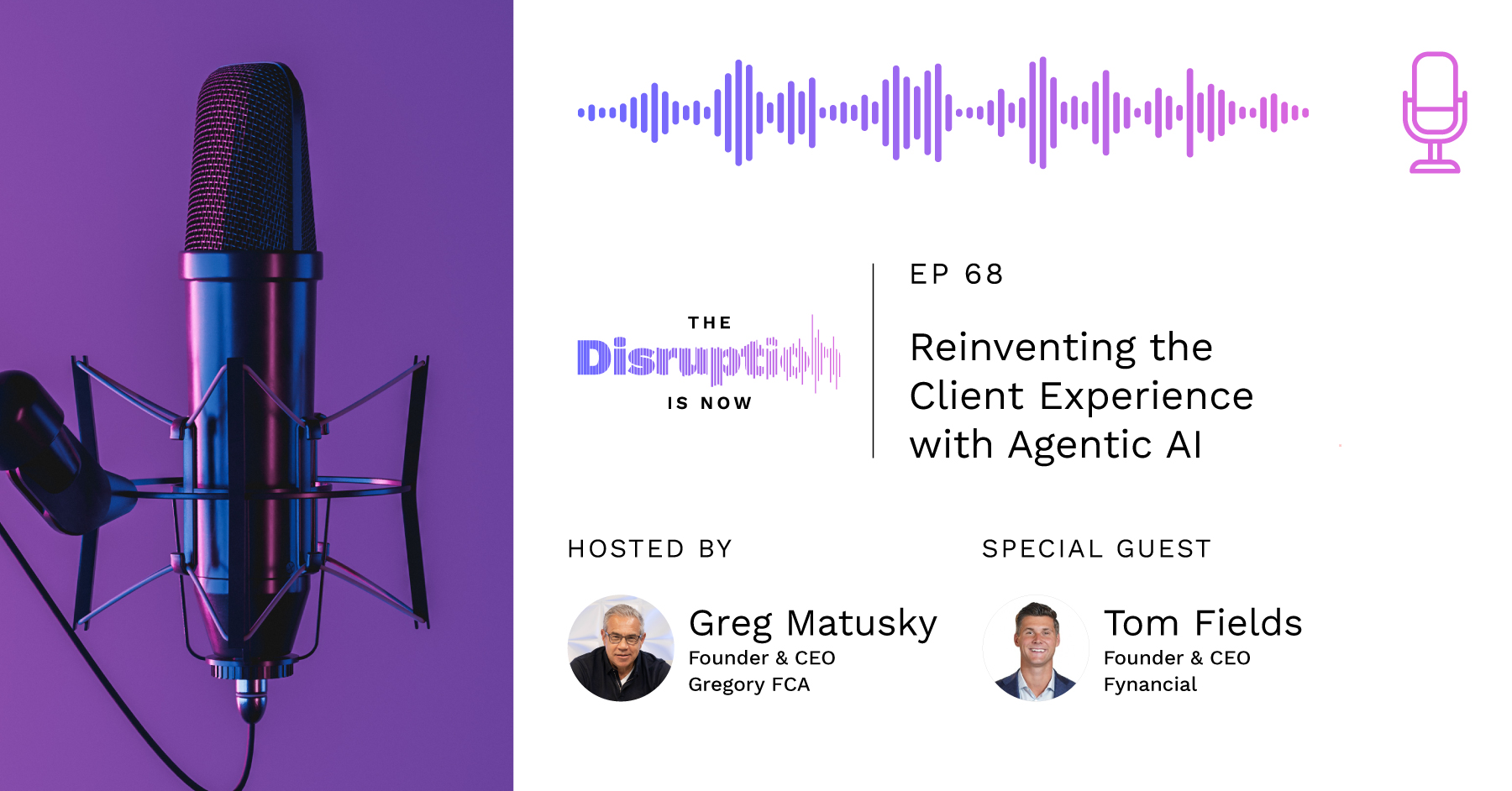When Tom Fields lost his biggest client, it wasn’t because of poor returns or bad advice.
It was because the client hadn’t heard from him in six months, despite a steady drip of newsletters, LinkedIn posts, and educational videos.
That moment lit the fuse for Fynancial, an AI-powered app he built for financial advisors. In this episode of The Disruption Is Now, Fields explains to host Greg Matusky how the app uses agentic AI to help advisors deliver hyper-personalized communication that actually gets through.
The conversation covers how over-automated outreach backfires, why static CRM tags are outdated, and how narrowly focused AI agents are adding real value where generalized AI tools fall short.
If you think your communications and content are personalized, this episode might make you rethink your strategy.
Watch now:
Key takeaways
“Personalized” communication is failing
Fields was doing everything marketing told him to: sending targeted emails, posting daily content, even creating a YouTube channel. But none of it reached his top client, who ultimately fired him because of the silence.
He built Fynancial to give advisors a direct line to clients’ attention through their own branded app. Advisors can skip the noisy inbox and deliver personalized updates on the platform people check 96 times a day — their phone.
While most firms see “personalized” communication as sending mass emails to tagged lists, those tags are static and often outdated. Fynancial uses real-time data to send custom messages instead.
For example, when Apple announces earnings at 4 p.m., an advisor can summarize the report and send a custom message to clients who hold Apple stock by 9 a.m. the next day.
That’s true personalization — timely, relevant, and hyper-targeted — and it’s only possible with integrated AI agents that work across systems.
Agentic AI isn’t just smarter — it’s safer and more precise
Fields describes the difference between generalized AI and agentic AI: The latter acts like a focused specialist, with a defined role and narrow scope.
Fynancial’s platform uses multiple agents trained to read specific data sources — one for CRM, one for performance reporting, and more — so the system never crosses wires on sensitive information.
This design ensures precision, improves safety, and makes it possible to automate meaningful actions, like checking who hasn’t been contacted recently and prompting outreach with a custom message and calendar link.
Trying to reach everyone is the wrong strategy
Fields argues that most advisors waste time chasing cold leads while missing the opportunity to deepen existing relationships. AI shifts that equation.
By using client-specific data to surface needs — like explaining a structured note to the exact subset of clients who would benefit — advisors can get more wallet share and more referrals.
These tailored nudges happen inside their own branded app, where clients are far more likely to engage than in an inbox full of spam.
AI might remind advisors what they love about the job
Too many advisors are stuck behind data entry screens, buried in admin tasks.
Fields predicts that within two years, the right agentic tools will let them stop typing and just talk — to clients, to prospects, to people they actually want to help.
AI will handle the inputs, the record-keeping, and the follow-ups. That shift could restore what brought many advisors to the field in the first place: the chance to change lives. And they can do it with their voice much faster than with numbers and graphs.
Key Moments
- How Tom lost his biggest client (3:15)
- Turning an epiphany into a fintech company (4:40)
- What “agentic AI” really means and how it differs from ChatGPT-style tools (7:10)
- Automating outreach to neglected clients (8:41)
- Using AI to increase wallet share instead of chasing cold leads (11:31)
- Why real-time segmentation beats old CRM tags (16:20)
- Why inbox overload makes attention the most valuable currency (18:17)
- The future where advisors stop typing and only talk to clients (20:24)



